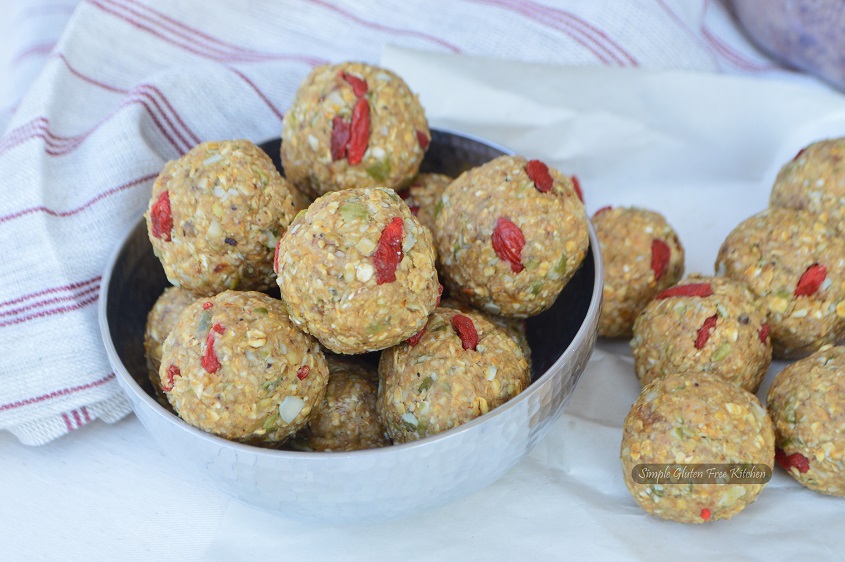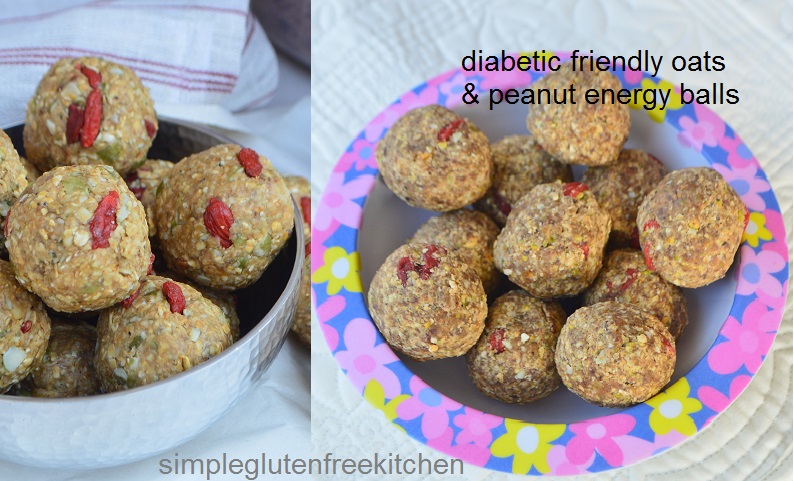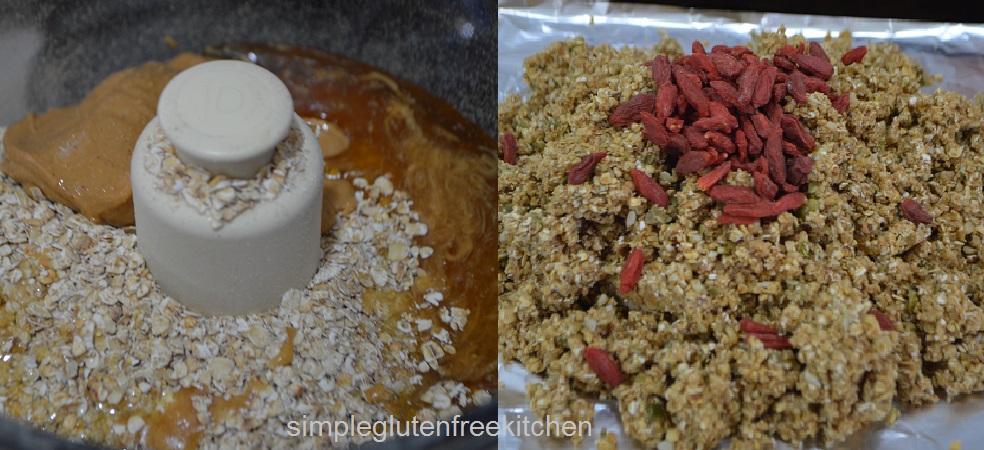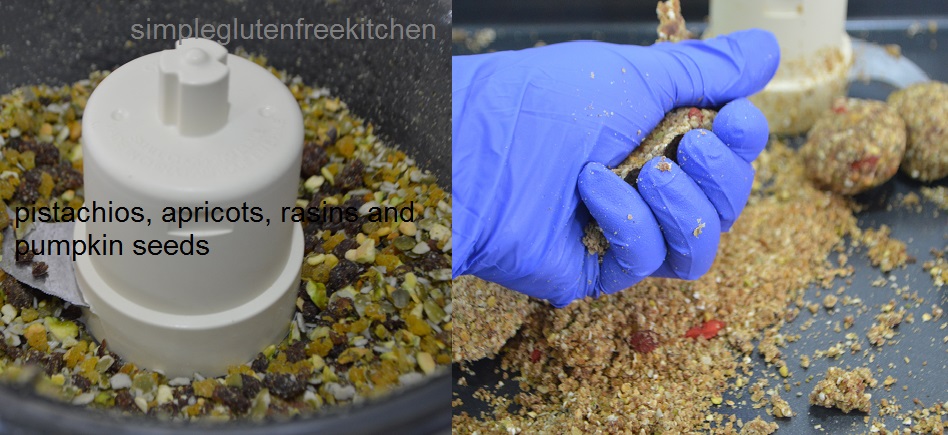I constantly get emails from readers and I really enjoy having conversations with people who need help and find balance with a life changing diet. Just last month I was exchanging emails with a parent whose 9 year old daughter is diagnosed with type 1 diabetes and celiac disease. Both are auto immune diseases and both involve food intolerances that require constant vigilance. I sympathize with this parent and can imagine the challenges she faces every single day trying to make sure it’s safe for her daughter to eat outside the house. Her email prompted me to put together this post as I thought there may be many other parents seeking the same information.

On October 25, 2014
Hello Balvinder, Thanks for your reply. I will check out the recipes. I am ok with you putting part of the email on your page. Please could you also give some more detailed suggestions on eating out at weddings and parties? Indian functions offer a range of buffets but still worried about allowing my little one to eat there. Since moving to the US we really do not go to these anymore, but may have some family functions coming up in the near future, so would love some help. Also, school parties and my daughter’s friend’s birthdays are always difficult to attend and suggestions on school lunches would be most appreciated. Really just want her to have a normal as possible life…..am looking forward to reading your blogs….thanks very much for helping us mums to make life a little easier for our children and families, despite the difficulties….Daisey
Being a gluten intolerant, I am familiar with what it is like to be a celiac, however no one in my family has diabetes so I researched online and consulted two of my diabetic friends to get firsthand knowledge about type 1 diabetes. Be aware that I am not a doctor, nutritionist or dietician and the information on this post is provided for educational purposes only. Testing your child’s blood sugar level before and after you ( try this recipe) will be a great way to see how her/his blood glucose level respond.

Let’s first see what diabetes is?
Diabetes is a disease that affects how the body uses glucose, a sugar that is the body’s main source of fuel. There are two types: Type 1 and Type 2. Here we’ll talk only about type 1.
In type 1 diabetes, (which used to be called juvenile diabetes) pancreas can’t make insulin. The body can still get glucose from food but the glucose can’t get into the cells where it’s needed. Glucose stays in the blood which makes the blood sugar level very high and causes health problems.
To fix the problem, they need to check their blood sugar levels often, take insulin shots or an insulin pump and follow a healthy eating plan so they can keep blood sugar levels under control. It is not the amount of sugar they eat that matters the most, but their total carbohydrate intake.
That said, diabetics can eat any type of food, as long as they eat it in moderation, and balance it with healthy choices, and of course if they are celiac they need to avoid gluten for life, as it is the ONLY treatment. Even a trace amount of gluten can cause serious problems. Sometimes, it can be upsetting for a child about foods he/she cannot have and things he/she can not do freely. As a parent your job is to support, love and build confidence in your child and most importantly teach her/him how to live gluten free with type 1 diabetes. No matter how young your child is he/she is never too young to learn about safety and food needs. So, focus on what you and your child can do with the diet, not on the diet’s limitations. I know it’s easier said than done. But, “you gotta do what you gotta do’.

Here are some tips to make your child’s life near to normal, safe and fun:
When you send your child to school
- Ensure that before the first day of school you provide them with a letter from an allergist or a licensed health care provider mentioning the precautions necessary for your child’s health and safety.
- In addition to that, meet the principal, nurse, gym instructor and your child’s teacher to discuss the minute details of your child’s medical condition and the foods and some non food items that must be avoided. Ask them to send out a letter to parents letting them know that a student with a gluten allergy is in their child’s class.
- Let them know your child’s need to have a mid morning or mid afternoon snack, the symptoms that indicate when your child needs insulin or to monitor glucose levels when she/he plays or exercises. If the school has all the information it will be safe and easier for your child to attend the school normally, go on field trips and participate in school activities.
- Educate your child early about the implications of both the diseases and saying “NO, thank you” to friends when offered food. Teach her/him the habit of washing hands frequently, eating from their own lunch box and using their own cutlery.
- Make yourself available to volunteer in school.
- Send easy lunches like peanut butter or cucumber sandwiches, vegetable or lean meat filled wraps, fruit, rice or quinoa pilaf, plain yogurt, crackers or vegetable crudites with dip. Use corn or teff tortilla for wraps or quesadilla. Pastas are kids favorite and you can make variety of pasta dishes.
If your child is going to a play date or a birthday party
- It would be a good idea if you speak to the friend’s parents ahead of time to explain that your child is celiac and has diabetes, and what she can and cannot eat and what they can do to help. By informing them ahead of time, you can prevent any awkward situations.
- It’s always wise to send some diabetic friendly & gluten free snacks with your child which is easy for the friend’s parents to store.
- Explain to your child and the friend’s parents that they can not eat from the same plate, bowl, or with the same fork as what their friends will be eating their gluten food from.
- If you can, offer to help with the play date or birthday celebrations. It will make things easier for the friend’s parent as well.
If you are going to eat out, plan ahead
- Find out a restaurant online or from the directory that has gluten free potions on their menu. It’s best to call the restaurant in advance, preferably when it’s not busy, and speak to the chef or the manager to make sure about gluten free food.
- Don’t feel shy to ask questions. Sometimes the general menu items look safe to eat gluten free but you might not realize that it might include gluten. South Indian dosa, besan burfi and egg omelet can contain all-purpose flour. The chicken pieces added to rice noodles is often dusted with flour.
- If you choose to go to a restaurant without calling, speak to the server or chef (before sitting down) that you or your child has food allergies. Since so many people are avoiding gluten these days, many restaurants keep gluten free pasta and noodles. They will happily prepare gluten free pasta with their own fresh sauce or saute vegetables and/or meat in olive oil or offer burgers without the bun. A lot of places now offer quinoa pilaf which is great.
- I often order takeout from an Indian style Asian food place and they make gluten free rice noodles in oil with eggs, vegetables and chicken. No sauce and no flour dusted on chicken. You can add your own sauce later. One thing the restaurant staff may not realize is the risk of cross-contamination unless you tell them that your food must be prepared on a clean cooking surface, with clean utensils. show them the gluten free celiac card to avoid any problems.
- As a general rule avoid foods with soy, oyster or glazed sauces. Order simple dishes or salads without dressing. Ask for lemon juice or balsamic vinegar on the side.
If you are going to an Indian wedding or eating out at a party
- Always call the host ( if it is at the house) ahead of time, explaining your child’s health concerns. Sometimes, it can be hard to ask a lot of questions if the party is in hall, and to trust the information you get. It’s best to bring some food from home, because Type 1 diabetic children need small snacks at regular intervals.
- Indian food offers a wide variety of naturally gluten free dishes, if you avoid samosa, paratha, naan and flour based sweets. Curries, vegetable dishes and lentils are a safe bet to have with rice.
- Beware of pakodas (vegetable fritters) and the fried onion garnish on top of biryani, they are usually fried in the same oil as the samosa.
- Grilled (tandoori) meats and seafood are typically gluten free but don’t risk, double check with the chef as each celiac person’s sensitivity may vary.
- With a little planning a favorite dessert once in a while can still be enjoyed.

These oats and peanut butter balls are a fantastic treat for everyone. I originally got this idea from Impact magazine, a year ago. Loaded with oats, walnuts, peanut butter, pumpkin seeds and maca powder these balls are a nutritious punch. They will keep you feeling energized and satisfied for hours, where a sugary treat might perk you up quickly, but make you crash back down just as fast. They are amazingly easy to make, store and carry. The best thing is, you can easily substitute all the ingredients in this recipe. I made it diabetic friendly by using apricots, no sugar raisins, pistachios and flax meal egg substitute for binding. Dried apricots are a source of natural sugar and have a low glycemic index, means that they cause a slower, healthy rise in blood sugar levels. Pistachios contains so few carbohydrates, it is unlikely that eating them will cause a potentially unsafe rise in your blood glucose levels.
Ingredients
- 270 g (2 1/2 cup) certified gluten free rolled oats
- 2 tbsp maca powder
- 68 g (1/2 cup) pumpkin seeds
- 54 g (1/2 cup) walnut pieces
- 68 g (1/2 cup) golden raisins
- 1/4 cup goji berries
- 1/2 cup no sugar added smooth peanut or almond butter (I used peanut butter)
- 1/2 cup honey or maple syrup ( I used honey)
- 1 1/4 cup certified gluten free quick cooking oats
- 1/4 cup sugar free raisins
- 1/4 cup pumpkin seeds
- 1/4 cup no sugar added smooth peanut butter
- 1/4 cup (4) sulfured or unsulfured apricots, chopped
- 1/4 cup unsalted pistachios
- 1 tsp cinnamon or vanilla extract (optional)
- 1 1/2 tbsp goji berries
- 1 tbsp flax meal +3 tbsp hot water
Instructions
- Toast oats in a dry non stick skillet over medium heat stirring occasionally, for 5-7 minutes until they smell fragrant and nutty. Cool for 5 minutes.
- In a bowl of food processor, coarsely chop pumpkin seed, walnuts and raisins.
- Add the cooled oats, maca powder, peanut butter and honey. Process until everything is combined
- Dump mixture on tray.
- Add 1/4 cup goji berries.
- Wearing gloves make round balls about the size of lime.
- These will keep on your counter in air tight container for as long as 30 days.
- Mix flax meal in hot water. Follow the above instructions for toasting oats.
- In a food processor coarsely chop apricots, then add pistachios and raisins. Process again.
- Next add the cooled oats and cinnamon or vanilla. While the food processor is running add flax meal mixture and peanut butter until everything is mixed (it won't form a ball or look combined but you will be able to press together without crumbling apart).
- Dump mixture on tray. Add goji berries and wearing gloves make small balls.
- These are a fantastic healthy treat for kids, can be kept on the counter and easy to carry when you travel.
Here are some good resources to find more information
Sending a celiac student to school
Telling other about your child’s diabetes
Be smart about diabetic cooking
Parents of children with diabetes
This post is part of Allergy Free Wednesdays.

Malti Sharma
Great Post Balvinder! Very helpful to those of us who have no idea what type 1 diabetes and gluten allergy world is all about.
Love the easiness to make these energy balls 🙂
easyfoodsmith
Wonderful post indeed Bal. You are doing a great job. Keep it up my friend.
Sridevi
Wow! This is an information packed post. A little help to those who are struggling with food problems would go a long way…Good job, Bal! It is tough for parents to hang around their young kids with their food. Peanut restrictions in schools only worsen the task!
Anupama
Amazing post! Every word you’ve said is helpful and worth reading, Balvinder. So well explained. truly appreciable.
It must be so traumatic for mothers to be in such a situation having to be wary of every food situation their child encounters.
Sheila M
As a parent to two children, one with type 1 diabetes and one with celiac and cannot also eat corn and soy, I really appreciate this topic. Feeding them the right food and keeping them safe outside the home is a challenge to say the least! Good to know that Indian curries are safe to eat and my daughter loves quesadilla. Where do you get the gluten free tortilla from? Does it have corn in it?
Balvinder
I am happy this topic is useful to you and I can understand how worried Parents get about the safety of their children outside the home.
I bought the gluten free tortillas from US costco and they are made from teff flour. I don’t think they have corn in it but not sure.
Monica
It’s wonderful to think of all the people you are helping! Kudos to you and keep up the great work. You’re not only entertaining but also educating and really impacting the lives of many of your readers. : ) And oats and peanut butter must be good! I’m glad we don’t need to be gluten free to admire and enjoy your recipes.
Daisy
Thankyou Bal for taking so much time, effort and care in responding to the the needs of so many families. It’s heart wrenching having to tell my daughter no, so many times…but like you mentioned, we need to focus on what she can eat rather than what she can’t.I am so nervous about eating anywhere even weddings because of cross contamination, that I would mostly take along home made meals. Also is it ok to use almond butter in your recipes?
Balvinder
Absolutely, you can use any nut or seed butter..If you want you can even add a tbsp of maple syrup for sweetness. Don’t worry about eating out with your daughter, I can totally understand your confusion. At first it will be challenging, but once you are familiar with what you can and cannot eat, hidden sources, and being comfortable speaking with the restaurant staff, it will become second nature. When in doubt, just go without!
Louise
Saw this post on google+, I am not allergic to anything but I love the look and the ingredients of this recipe. What exactly is maca powder? Is it essential?
Balvinder
Thanks for visiting Louise! I am glad you like the recipe. Maca powder is not essential in this recipe but if you use you get all the energizing nutrients from it. Maca is a Peruvian root known for strengthening the body and increasing stamina.
Bam's Kitchen
Great informative post and love your 2 ways to make these energy balls. Great little snacks for the school lunches.
ritu
Very nice and healthy energy bars. It looks delicious. I am gonna give it a try soon. 🙂
Balvinder
Thanks Ritu for stopping by. Do, let me know how it goes.
Helene D'Souza
Oh wow celiac and diabetic? That must be though… so sad, but glad that there is somebody like you who takes the time to share the knowledge Balvinder. btw I could need an energy kick right now, I want the oat balls now.
Tammy
Honey is not for diabetics. it still is a sugar that can be bad.
I used agave instead
Balvinder
You are right Tammy, and the diabetic friendly recipe does not contain any honey.
Tammy
But they can still use a sweetener like agave
It’s a very sweet substance and low glycemic
I do not have diabetes but my glucsoe flucuated due to post-menopause and sure feels the same as diabetes.
I have to follow a diabetic diet and agave is wonderful
your son would love it
healthier, natural & more tasty than splenda
Balvinder
Good to know agave is low glycemic, Tammy. I will sure try using it.
Tammy
If you have an aldi’s store near by they sell small containers of it that way if you buy it and don’t like it you didn’t buy a huge bottle or waste too much money
Balvinder
No I don’t have aldi store here but I’ll check in choices.
Lisa
I think I’ll make these to pop in my kids’ lunchboxes. They sound delicious AND healthy!
Balvinder
Great idea, Lisa!Thank you!